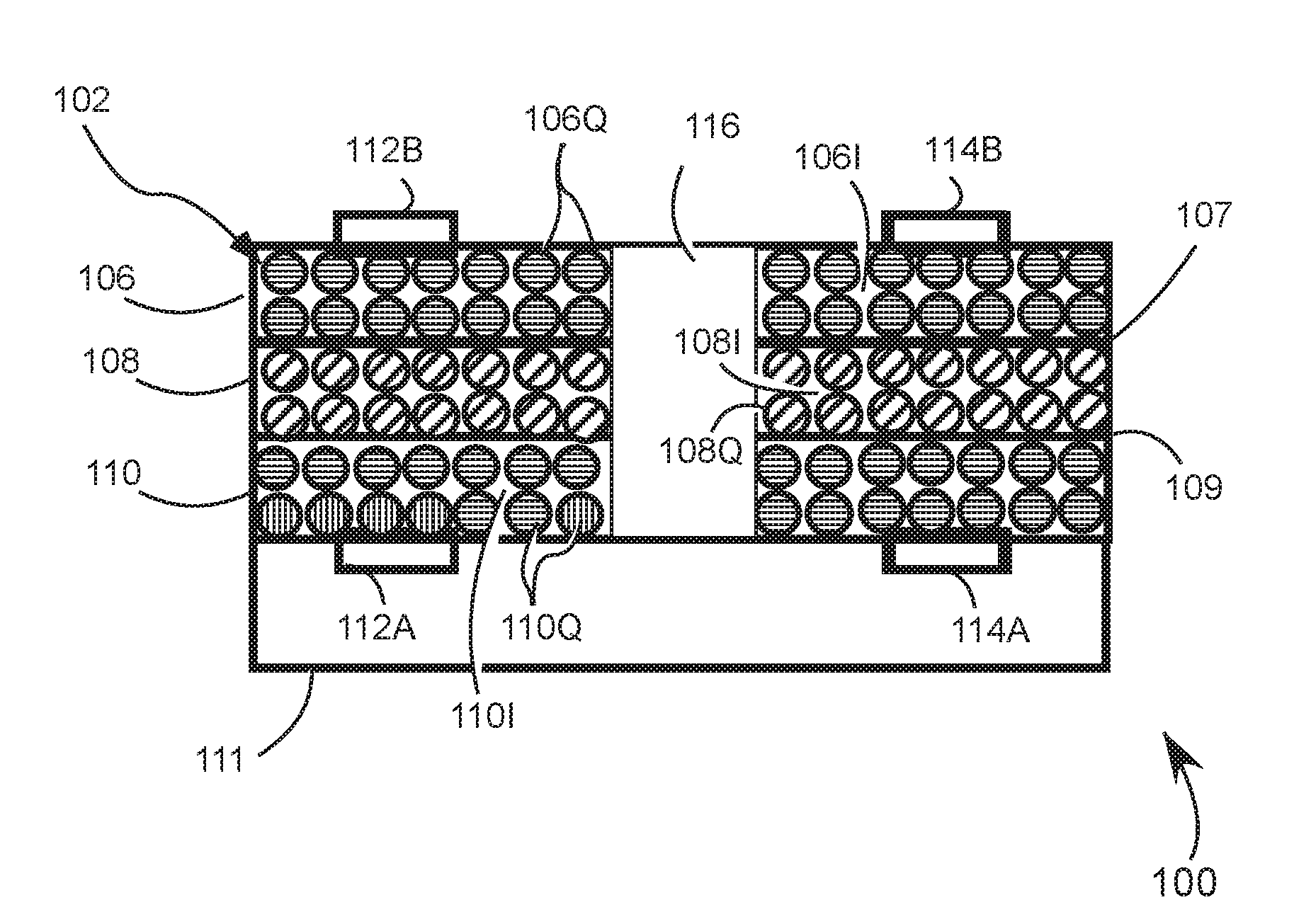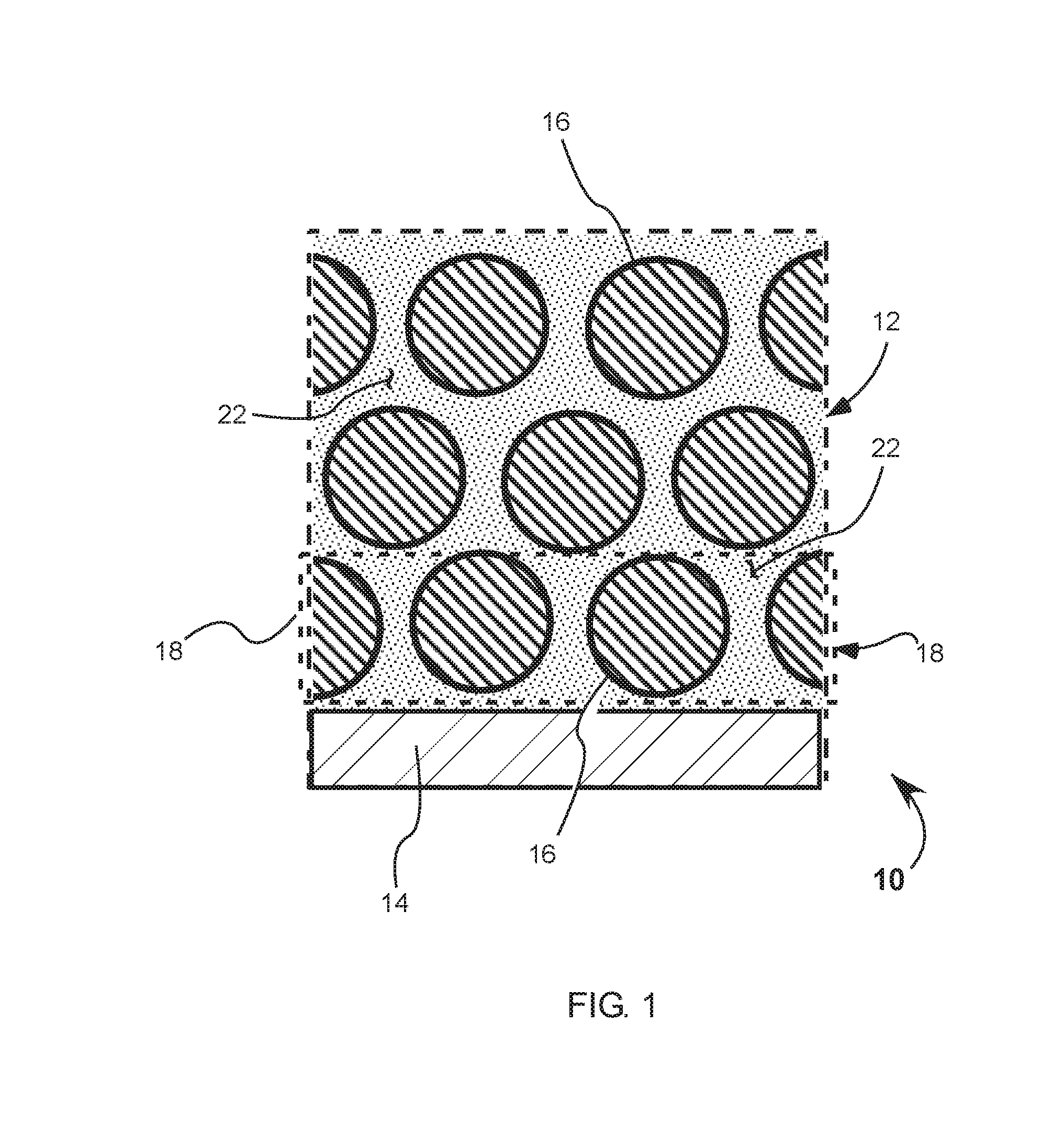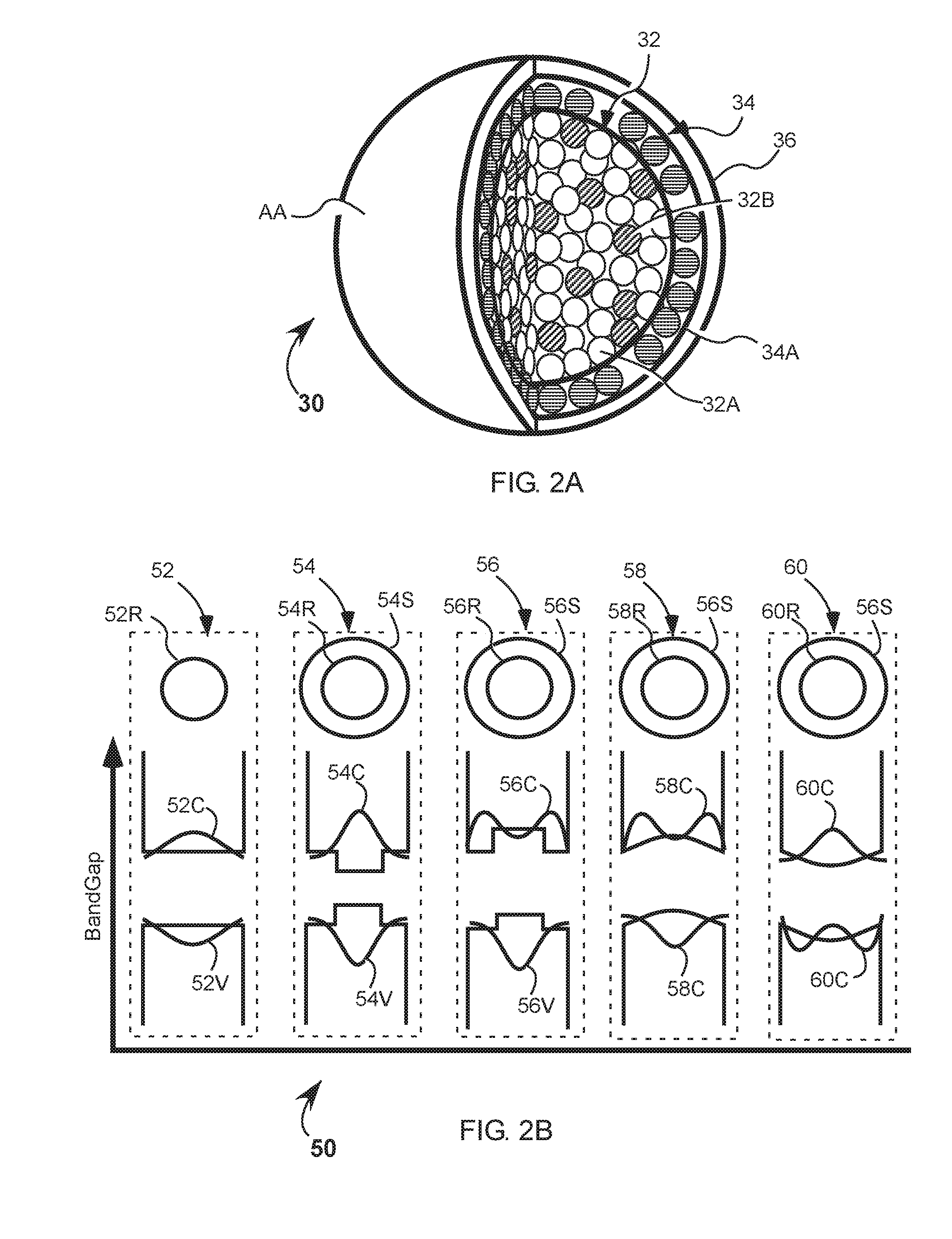Composite quantum-dot materials for photonic detectors
a quantum-dot detector and composite technology, applied in the field of photodetectors, can solve the problems of spectrally limited imaging platforms and very high cost, and achieve the effects of stabilizing the local density of states, reducing the rate of local reaction to atmospheric oxygen, and stabilizing the electrical properties of devices
- Summary
- Abstract
- Description
- Claims
- Application Information
AI Technical Summary
Benefits of technology
Problems solved by technology
Method used
Image
Examples
Embodiment Construction
[0018]Referring now to the drawings, wherein like components are designated by like reference numerals. Methods of manufacture and various embodiments of the present disclosure are described further herein below.
[0019]Referring to FIG. 1, a partial view of a cross-section of a composite quantum-dot photodetector film 10 has a photodetector film 12 formed by a layer-by-layer deposition process to build homogenous and heterogeneous photodetector film on a substrate 14. One such process includes alternatively dipping the substrate 14 into a colloidal solution containing at least one type of a quantum dot 16, thereby forming a monolayer 18 of quantum dots 16 and then dipping the substrate with monolayer 18 of quantum dots 16 in a ligand spacing solution to build a lattice of the quantum dots. Then, alternatively exposing the lattice of the quantum dots to a water vapor and an infill materials leaves behind an inorganic material 22, wherein exposing the film to the water vapor coats the ...
PUM
| Property | Measurement | Unit |
|---|---|---|
| peak-to-peak flatness | aaaaa | aaaaa |
| wavelengths | aaaaa | aaaaa |
| carrier mobilities | aaaaa | aaaaa |
Abstract
Description
Claims
Application Information
 Login to View More
Login to View More - R&D
- Intellectual Property
- Life Sciences
- Materials
- Tech Scout
- Unparalleled Data Quality
- Higher Quality Content
- 60% Fewer Hallucinations
Browse by: Latest US Patents, China's latest patents, Technical Efficacy Thesaurus, Application Domain, Technology Topic, Popular Technical Reports.
© 2025 PatSnap. All rights reserved.Legal|Privacy policy|Modern Slavery Act Transparency Statement|Sitemap|About US| Contact US: help@patsnap.com



